- Sanitation systems
- Shared toilets, community toilets, public toilets
- Updates on Sanergy in Kenya (public toilet business with urine diversion and composting)
Updates on Sanergy in Kenya (public toilet business with urine diversion and composting)
72.2k views
- kevintayler
-
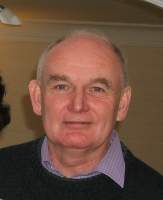
- I am a water and sanitation engineer, also interested in general urban housing issues. In recent years, I have worked on FSM for various organizations
Less- Posts: 79
- Karma: 11
- Likes received: 46
Re: Consumer Insights on Sanitation – Upping the Usage of Fresh Life Toilets (update by Sanergy)
Apologies or the slightly delayed reply to your question - I was travelling until Thursday and am only now getting back to normal at home. I don't think that I ever did get any further with finding out exactly what the steps in the Sanergy treatment process were. Also, apologies for not contributing more to the Wikipedia entry on FS treatment - there always seem to be so many other things to do.
Best regards
Kevin
Independent water and sanitation consultant
Horsham
UK
Please Log in to join the conversation.
You need to login to reply- Elisabeth
-
- User is blocked
- Freelance consultant since 2012
Less- Posts: 3372
- Karma: 54
- Likes received: 932
Re: Consumer Insights on Sanitation – Upping the Usage of Fresh Life Toilets (update by Sanergy)
I came back to this thread two years later to post an update about Sanergy's work which I just spotted on the FSM5 Conference website. I am going to post that one below. But first to your question from January 2017: have you (or anyone else) found answers for those technical questions yet? If not, then who at Sanergy might be the best person to approach? In the past I have found a certain hesitancy on Sanergy's side to engage in forum discussions; maybe just lack of time or maybe something else, I am not too sure; now 2 years later it might be worth trying again
So here is the presentation that they gave at the FSM5 Conference in Cape Town:
Safe containment of manually emptied pit latrine waste from Nairobi’s urban slums
fsm5.susana.org/images/FSM_Conference_Ma...tation-FSM5-2019.pdf
Conference website: fsm5.susana.org/en/downloads/conference-materials
Regards,
Elisabeth
Freelance consultant on environmental and climate projects
Attachments:
-
 sanergy.png
(Filesize: 150KB)
sanergy.png
(Filesize: 150KB)
Please Log in to join the conversation.
You need to login to reply- kevintayler
-

- I am a water and sanitation engineer, also interested in general urban housing issues. In recent years, I have worked on FSM for various organizations
Less- Posts: 79
- Karma: 11
- Likes received: 46
Re: Consumer Insights on Sanitation – Upping the Usage of Fresh Life Toilets (update by Sanergy)
I have just got onto this thread while looking for information on Sanergy's composting work. One of the presentations has a diagram showing the various units that are located on the treatment plant site. They include windrows, 'compost boxes' (which I take to mean the compost bins that are referred to in other publications and notes) biodigester and Biomax (in addition to the black soldier fly unit that Elisabeth has already explained is experimental.
I would be interested to know how the various units link - are they completely separate streams or do some of them link up (with windrows following compost boxes for instance. If they are separate streams, it would be interesting to know more about the purpose and, where appropriate, relative merits of the various streams.
Thanks in advance for replies
Kevin
Independent water and sanitation consultant
Horsham
UK
Please Log in to join the conversation.
You need to login to reply- Elisabeth
-
- User is blocked
- Freelance consultant since 2012
Less- Posts: 3372
- Karma: 54
- Likes received: 932
Re: Biosolids, sewage sludge is toxic sludge?
See also what I (and others) wrote about this on the Wikipedia page on compost:
en.wikipedia.org/wiki/Compost#Humanure
"Humanure" is a combination of the words human and manure, designating human excrement (feces and urine) that is recycled via composting for agricultural or other purposes. The term was first used in a 1994 book by Joseph Jenkins that advocates the use of this organic soil amendment.[11] The term humanure is used by compost enthusiasts in the US but not generally elsewhere. Because the term "humanure" has no authoritative definition it is subject to various uses; news reporters occasionally fail to correctly distinguish between humanure and sewage sludge or "biosolids".[12]
Freelance consultant on environmental and climate projects
Please Log in to join the conversation.
You need to login to replyFounding Member of Water-Wise Vermont (formerly Vermonters Against Toxic Sludge)
Please Log in to join the conversation.
You need to login to reply- Sanergy
-
- Sanergy
Less- Posts: 10
- Karma: 1
- Likes received: 3
Thank you Hajo and Mikkel for raising some of the concerns you have about the use of the term ‘biosolids’. While we acknowledge that there has been controversy surrounding the term in the US, the scenario is different here in Kenya where we work. In Kenya, the term does not have associations with sewer sludge; however, we are in the process of obtaining international approval for our fertilizers, so we are acutely aware of the international connotations.
We use the term ‘biosolids’ as a way to refer to the human waste components of our fertilizer. While we strive to be open and honest in the marketing of our product, we have found this description to be more appealing to our customers; however, we are always looking for the best possible way to market and promote our fertilizer, and we would love to hear suggestions of alternative terminology.
Team Sanergy
For more information on Sanergy visit:
Our website: saner.gy/
Like our Facebook page: www.facebook.com/Sanergy
Follow us on Twitter: twitter.com/Sanergy
Please Log in to join the conversation.
You need to login to reply- hajo
-

- retired in Germany... but still interested in water and sanitation... especially in OSS... and especially in Africa...
Less- Posts: 288
- Karma: 15
- Likes received: 156
@Elisabeth: 'biosolids' is described as an ingredient on the label of the EVERGROW fertilizer bag;
@Kai: when I read 'biosolids' my brain went blank as described in the article referred to by you. Few people (outside US) may know that it has been 'introduced' to cover up sewage/sludge;
@sanergy: what do you actually mean when you describe some of the ingredients as 'biosolids'?
ciao Hajo
* Note by moderator:
A related sludge about sewage sludge is here , and this post had been temporarily moved by my to there, hence this note by Hajo.
Albert Einstein
Any intelligent fool can make things bigger and more complex... It takes a touch of a genius - and a lot of courage to move in the opposite direction.
E.F. Schumacher
Everything should be made as simple as possible, but not simpler.
Albert Einstein
Please Log in to join the conversation.
You need to login to replyRe: Consumer Insights on Sanitation – Upping the Usage of Fresh Life Toilets (update by Sanergy)
Referring to the image of the bagged "Evergrow" product above (and, in particular, its list of ingredients) I have to call out the use of the term "biosolids" to describe the feces and urine constituents of this product. Feces and urine are not biosolids. Biosolids is the sanitized term given to sewage sludge by Madison Avenue which itself is the name used to describe the solids that are removed from wastewater treatment plants. Surely the last thing Sanergy and its compost want to be associated with is the material that the US EPA has shown contains a plethora of industrial toxics? Given the international controversy that surrounds "biosolids" I would urge Sanergy staff to seriously consider eliminating all uses of this word from their marketing materials and discussions and do everything they can to distance themselves from any association with this material.
The beauty of "Evergrow" (and everything that it represents) is that it is absolutely NOT biosolids. Moreover, at least in the USA (where I would guess that some of Sanergy's funding and support emanates), the use of the term "organic" and "biosolids" in the same sentence (or even within the same product description or on the same packaging) is deceptive and a huge no-no given that biosolids are prohibited from use in conjunction with certified organic agricultural production. I worry that US funders might get the wrong idea and/or take issue with the use of the word as well. If I were Sanergy I would run as far as I could from this word.
And Elisabeth (and other forum moderators) - please do not move my comment. I am directing my concern directly at the fine folks of Sanergy and I don't want my message lost in another thread. Thanks.
Founding Member of Water-Wise Vermont (formerly Vermonters Against Toxic Sludge)
Please Log in to join the conversation.
You need to login to reply- Elisabeth
-
- User is blocked
- Freelance consultant since 2012
Less- Posts: 3372
- Karma: 54
- Likes received: 932
Re: Consumer Insights on Sanitation – Upping the Usage of Fresh Life Toilets (update by Sanergy)
Dear Edith and Laura,
Thanks so much for your helpful answers to my questions! (this is so much better than some other suppliers of technology who I ask three times the same question and they ignore two and only half answer one)
About the helminth analysis, we hear time and time again that it is so difficult to do. Now you have set up your own lab because nobody else in Kenya was routinely measuring this in faecal or compost samples. Could you tell me and others who face a similar situation a bit about your measurement technique and protocol? Which method do you use, was it in the end easier than you thought to set up the microscopes etc. or are you still finding it difficult? Did you have to send any of your staff to training somehwere? (for all: see also this thread on new software from Mexico to identify helminth eggs with less human input: forum.susana.org/forum/categories/159-in...e-mexico-unam-mexico)
By the way, Laura, I used two of your photos from before your time at Sanergy to illustrate the helminth article on Wikipedia where we explain how helminths are used as an indicator organism:
en.wikipedia.org/wiki/Helminths#Indicator_organism
This means that helminth analysis is/was available in Kenya already? The photo description said: "The method from the Manual of Parasitological and Bacteriological Techniques (WHO, 1996) is used to determine helminth eggs in the UDDT products."
These are the two photos that I included in the Wikipedia article:
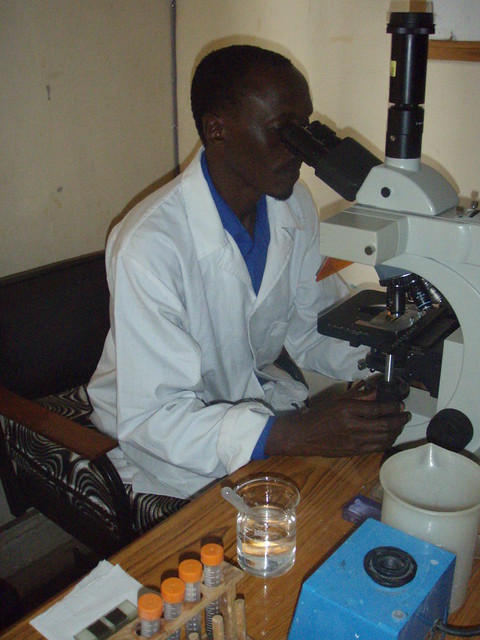
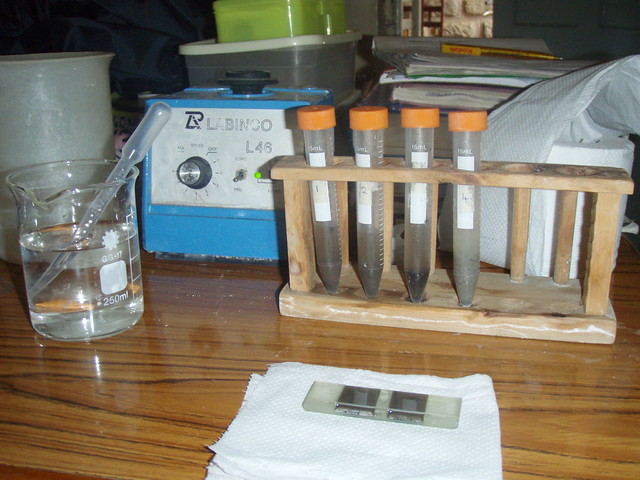
Just one small question that you overlooked which was in my post above where I had added the two photos:
In-vessel composting; this photo looks interesting but I can't remember what Laura told us about this? Is this a trial? Where is this machine from?
Kind regards,
Elisabeth
Freelance consultant on environmental and climate projects
Please Log in to join the conversation.
You need to login to reply- Sanergy
-
- Sanergy
Less- Posts: 10
- Karma: 1
- Likes received: 3
Re: Consumer Insights on Sanitation – Upping the Usage of Fresh Life Toilets (update by Sanergy)
These are great questions! They certainly make for an enriching conversation about our work. I am posting on behalf of my teammate Laura Kimani (Research and Development) who gladly provided the answers to your questions.
Q - Would you also consider vermi-composting in future? If not, why not?
A - We are always open to new treatment technologies and learning from other successful large scale composting operations like the one presented by Michael Quintern of MyNOKE. However, we may not look into vermi-composting in the near future because of the following reasons:
1. Design and process changes
Vermi-composting would require that we change our system to ensure that compost is kept according to the required depth, to ideal temperature and moisture content for worms to strive.
2. Time and space requirements
Vermi composting takes time and therefor increases space requirements. According to the information presented by Michael the processing time using worms is 12 month, which is significantly longer than our current processing time.
3. Lack of local expertise
We have built up local expertise in thermophilic co-composting in terms of safety operations and maintenance. We would have to build up this expertise for a vermi-composting system first to ensure a safe and high quality end product.
Q - You mentioned measuring E.coli. Is there really much point in testing that? What does that tell you? Not much, I don't think.
A - We are testing E.coli and Helminth eggs as indicator organisms and as stated in the WHO guidelines. Even so E.coli is easily eliminated it at least gives us an indication if there is pathogen elimination and if there is any risk of re-growth.
Q - Could you clarify my uncertainty about who is measuring helminths for you? I think ideally you should have your own equipment on-site for measuring it.
A - Yes, we built our own internal laboratory for routine analysis and quality testing. This includes E.coli, helminth analysis as well as basic compost quality analysis. We still undertake third party tests to confirm our findings.
Q - Why the big effort in cleaning the faeces bins at your site and for having plastic bags in the bins which add to solid waste? Do the bins really have to be spotless when they are returned to the toilets?
A - Yes, delivering a quality service to our customers is very important to us as part of the “Fresh Life experience”. This service includes providing smell free, clean and hygienically safe cartridges.
Q - What happens with the washing water that comes from washing the faeces bins?
A - The wash water is drained into a septic tank and disposed in a neighbouring treatment plant.
Q - How diligently do the workers user their PPE (personal protective equipment)? I can imagine it must get quite hot in those suits, boots and gloves. Is it tempting for them to take it off when there are no photos being taken? How about those masks, how often do they need to be replaced? Do they get tested for efficiency? I.e. perhaps the workers are wearing masks but they are already contaminated?
A - Surprisingly diligently, they always tell me they are used to the heat. Besides providing PPE it is really important to provide training on risks and mitigation methods. We realized that awareness of biological hazards is crucial to incentivise proper usage of PPE. Lastly the proper usage of PPE is considered in each team member’s performance rating which helps to enforce it, too.
We hope these answers help everyone understand our operations better!
Best,
Edith Karimi
For more information on Sanergy visit:
Our website: saner.gy/
Like our Facebook page: www.facebook.com/Sanergy
Follow us on Twitter: twitter.com/Sanergy
Please Log in to join the conversation.
You need to login to reply- Elisabeth
-
- User is blocked
- Freelance consultant since 2012
Less- Posts: 3372
- Karma: 54
- Likes received: 932
Re: Consumer Insights on Sanitation – Upping the Usage of Fresh Life Toilets (update by Sanergy)
Current toilet model being used by Sanergy, showing the faeces bin:
Cleaning of the faeces bins at the new processing site, a bit outside of Nairobi:
Thermophilic composting:
The compost as it is being sold:
In-vessel composting; this photo looks interesting but I can't remember what Laura told us about this? Is this a trial? Where is this machine from?
Freelance consultant on environmental and climate projects
Attachments:
-
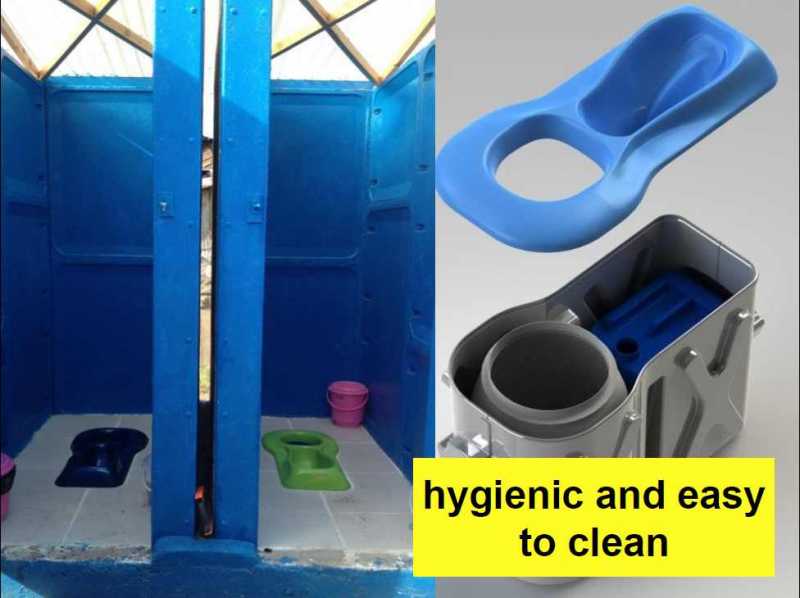 Sanergy1.jpg
(Filesize: 37KB)
Sanergy1.jpg
(Filesize: 37KB)
-
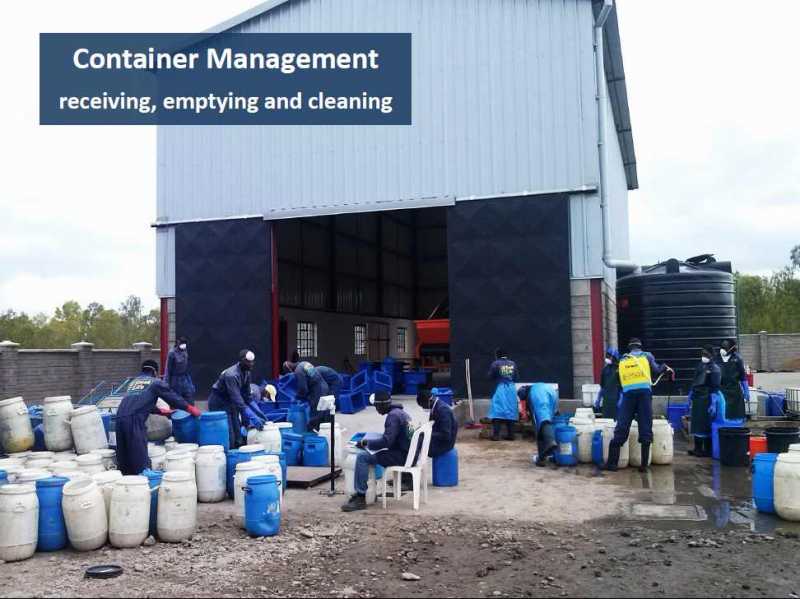 Sanergy2.jpg
(Filesize: 51KB)
Sanergy2.jpg
(Filesize: 51KB)
-
 Sanergy3.jpg
(Filesize: 75KB)
Sanergy3.jpg
(Filesize: 75KB)
-
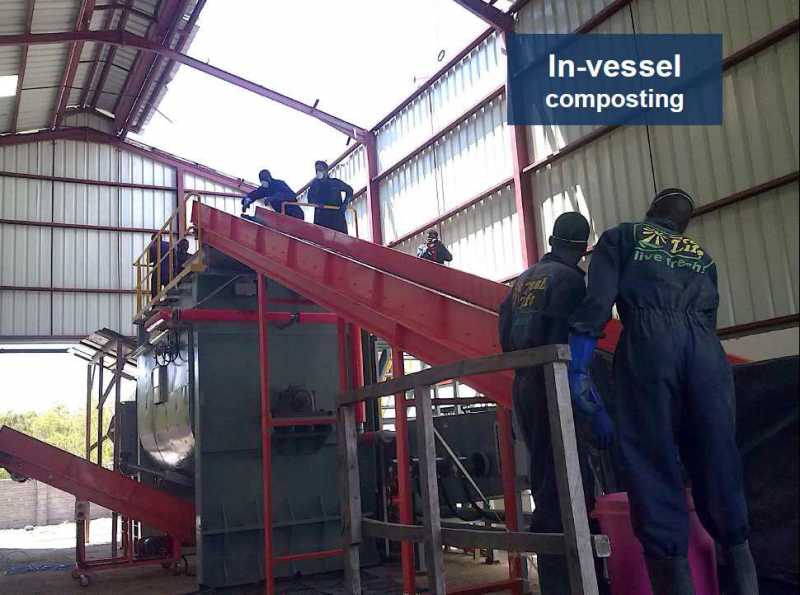 Sanergy5.jpg
(Filesize: 52KB)
Sanergy5.jpg
(Filesize: 52KB)
-
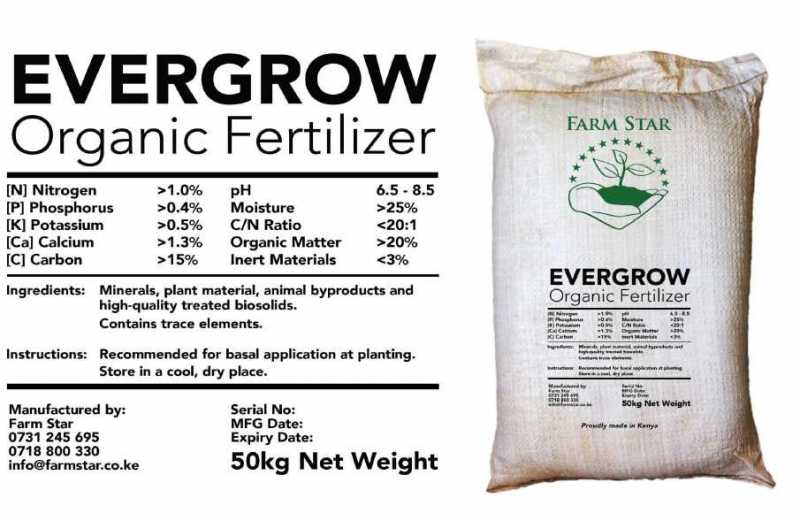 Sanergy4.jpg
(Filesize: 49KB)
Sanergy4.jpg
(Filesize: 49KB)
Please Log in to join the conversation.
You need to login to reply- Elisabeth
-
- User is blocked
- Freelance consultant since 2012
Less- Posts: 3372
- Karma: 54
- Likes received: 932
Re: Consumer Insights on Sanitation – Upping the Usage of Fresh Life Toilets (update by Sanergy)
I think it is fair to say that many of us are following your progress with great interest, holding thumbs that all will continue to go smoothly and being deeply impressed by your commitment and enthousiasm for the cause!
I was fortunate to hear Laura Kimani from Sanergy present about the resource recovery aspects from Sanergy's work at the recent FSM3 Conference in Hanoi.
David Auerbach has sent me her presentations for sharing. Please find them attached below.
It is mainly photos only, so if you have questions for Laura or David, please put them here.
For the second presentation that I have attached below (overview of Sanergy's process), I think we will get also the video of Laura's presentation. For the first presentation (resource recovery) there is no video as it was presented at a smaller workshop.
Some of my notes from the workshop*:
- They have recently begun to sell their fertiliser "Evergrow Organic Fertiliser" for 500 USD/ton which is a high price but people are willing to pay it. She said the fertiliser is very popular, it is adding organic matter to the soil which is important for the Kenyan soils, at least in that area.
- I think it is important to keep in mind that unlike fertilisers made from faecal sludge this fetiliser is also so much purer as the incoming ingredients are only faeces, saw dust, toilet paper and some urine (I am not sure if all the urine is added to the compost heaps?). But no garbage, no heavy metals from small-scale industries, no chemicals being dumped in the toilets etc. These toilets are well looked after semi-public toilets with an attendant who makes sure that they are used properly.I say "semi" to distinguish them from large public toilet blocks which are used in an anonymous fashion. These ones are only 1-2 toilet cubicles in one location.
- The black soldier fly work that you can see in the pictures is still experimental only.
- Pathogen kill is achieved by the high temperatures achieved in the composter, and is being closely monitored (I cannot remember exactly what she said about helminth analysis, only that it was difficult to find a lab to do it, so I think they either test it themselves now or send samples to South Africa for testing; and I think each batch is being tested (I can hear Joe asking this question already; you have sensitised me well to this question, Joe
 ).
).
- Would you also consider vermi-composting in future? If not, why not?
- You mentioned measuring E.coli. Is there really much point in testing that? What does that tell you? Not much, I don't think.
- Could you clarify my uncertainty about who is measuring helminths for you? I think ideally you should have your own equipment on-site for measuring it.
- Why the big effort in cleaning the faeces bins at your site and for having plastic bags in the bins which add to solid waste? Do the bins really have to be spotless when they are returned to the toilets?
- What happens with the washing water that comes from washing the faeces bins?
- How diligently do the workers user their PPE (personal protective equipment)? I can imagine it must get quite hot in those suits, boots and gloves. Is it tempting for them to take it off when there are no photos being taken? How about those masks, how often do they need to be replaced? Do they get tested for efficiency? I.e. perhaps the workers are wearing masks but they are already contaminated?
Kind regards,
Elisabeth
* SOIL Hait, ACF Mongolia, IWMI, Vermi-composting New Zealand and others presented as well in this workshop and I hope to be able to make their presentations available on the forum as well.
Freelance consultant on environmental and climate projects
This message has attachments files.
Please log in or register to see it.
Please Log in to join the conversation.
You need to login to reply- Sanitation systems
- Shared toilets, community toilets, public toilets
- Updates on Sanergy in Kenya (public toilet business with urine diversion and composting)







